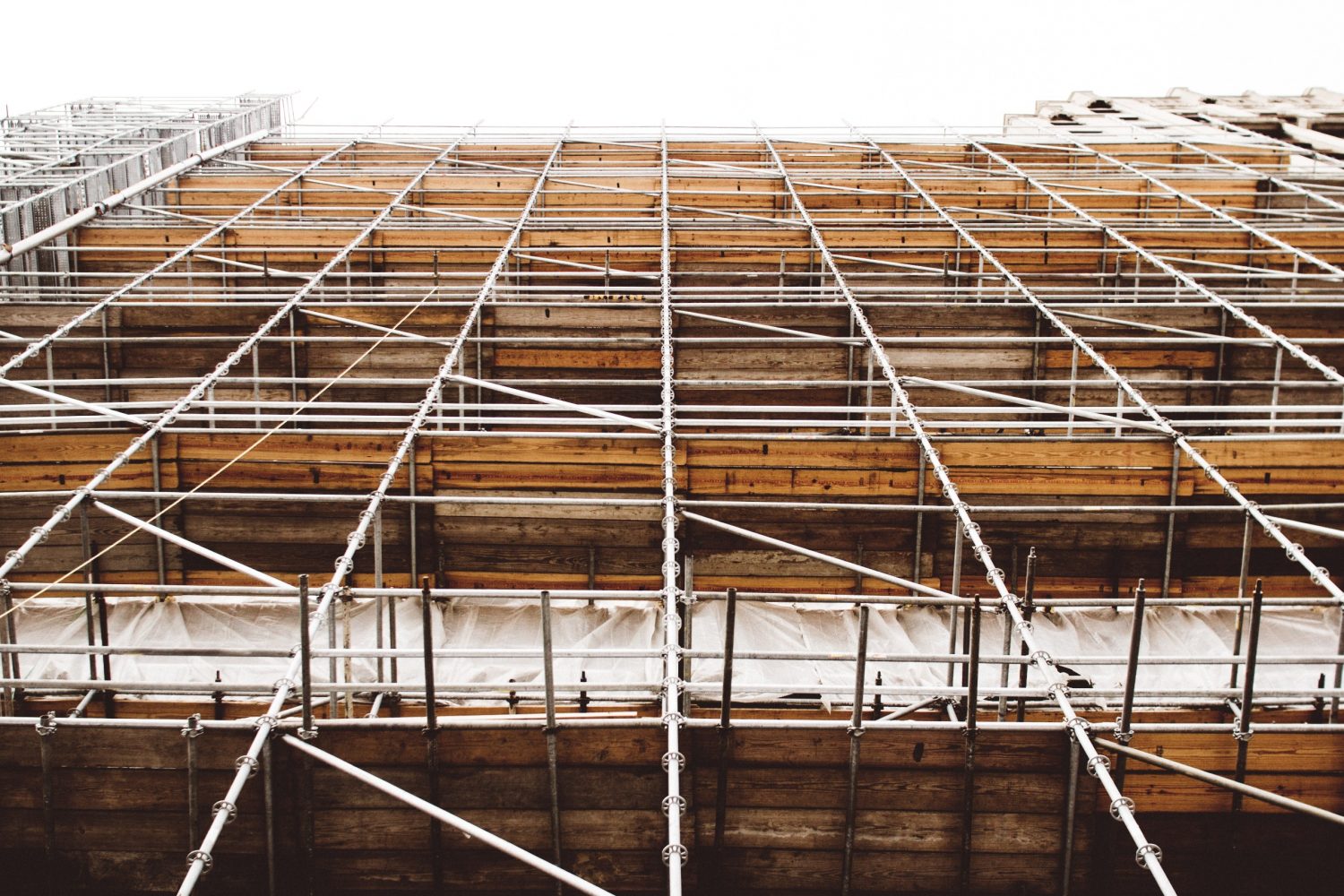Scaffold Safety: 4 Common Hazards and How to Reduce Exposure
In a Bureau of Labor and Statistics (BLS) study, 72% of workers injured in scaffold accidents attributed the accident either to the planking or support giving way, or to the employee slipping or being struck by a falling object. Scaffolds are integral to the construction industry with approximately 65% of the workforce involved in work from scaffolds. When used properly, scaffolds can save significant time and money. Though they are convenient and necessary, there are four major hazards associated with worker injuries that everyone needs to be aware for proper scaffold safety.
4 Major Hazards: Scaffold Safety
1. Falls
Falls are attributed to the lack of guardrails, improper installation of guardrails and failure to use personal fall arrest systems when required. The OSHA standard requires fall protection must be used when work heights reach 10’ or more. OSHA’s standards represent the minimum level of protection; many general contractors require 100% fall protection at 6’ or greater when working on scaffolds. These contractors are increasing safety margins by exceeding the minimum requirements of the OSHA standards.
Lack of proper access to the scaffold work platform is an additional reason for falls from scaffolds. Access in the form of a secured ladder, stair tower, ramp, etc. is required whenever there is 24” vertical change to an upper or lower level. The means of access must be determined before erection of the scaffold and employees are never allowed to climb on cross braces for either vertical or horizontal movement.
2. Scaffold collapse
The proper erection of a scaffold is essential in preventing this particular hazard. Before erecting the scaffold, a number of factors must be accounted for. The amount of weight the scaffold will be required to hold including the weight of the scaffold itself, materials, and workers must be considered. Foundation stability, placement of scaffold planks, distance from the scaffold to the work surface, and tie-in requirements are just a few of the other items that must be considered prior to building a scaffold.
Scaffold Competent Person
A knowledgeable individual who can perform preplanning will reduce the chances of injury and save money for any task. However, when building, moving, or dismantling a scaffold, a knowledgeable person, also known as the scaffold competent person, must be present. A competent person must also inspect the scaffold daily to ensure the structure remains in a safe condition. Improper construction can lead to a total collapse of the scaffold or falling components – both of which can be fatal.
3. Struck by falling materials
Workers on scaffolds are not the only ones exposed to scaffold related hazards. Many individuals have been injured or killed due to being struck by materials or tools that have fallen from scaffold platforms. These people must be protected from falling objects. OSHA requires that this is done one of two ways. The first is to install toe boards or netting on work platforms to prevent these items from falling to the ground or lower level work areas. The other option is to erect barricades that physically prevent individuals from walking under work platforms.
Caution or Danger tape is often used in an attempt to keep people away from overhead hazards but is often disregarded or taken down creating possible struck by hazards. A more robust system such as plastic mesh or wooden barricades is generally more effective and much easier to maintain. When members of the public could potentially move close enough to be struck by falling objects, creating barriers to prevent them from entering the area where objects can fall is a recognized best practice. Regardless of the type of falling object protection used, it is crucial that other individuals on the work site are aware of the overhead work.
4. Electrocution
Once again we look to preplanning and the competent person to assure there are no electrical hazards present during scaffold use. A minimum of 10’ must be maintained between the scaffold and electrical hazards. If this distance cannot be maintained, then the hazard must be de-energized or properly insulated by the power company. Coordination between the power company and the company erecting / using the scaffold cannot be over stated.
Lastly, all employees who work on scaffolds must have documented training. The training topics must include identification and prevention of fall hazards, falling tools and materials hazards, and knowledge of electrical hazards.
Key Takeaways:
- Fall protection is required when work heights reach 10 feet or more.
- Provide proper access to the scaffold and never allow employees to climb on cross braces for horizontal or vertical movement.
- The scaffold competent person must be present when building, moving or dismantling the scaffold and must inspect it daily.
- Erect barricades to prevent individuals from walking under work platforms and place signs to warn those close by of the possible hazards.
- Maintain a minimum of 10 feet between the scaffold and any electrical hazard.
- Ensure all employees working on scaffolding have had proper training.
Scaffold safety starts from the ground up. Only safe work conditions and actions will prevent unnecessary injuries when working on these ever changing structures.
Editor’s Note: This article was originally published in 2015, but has since been updated with more current information.








